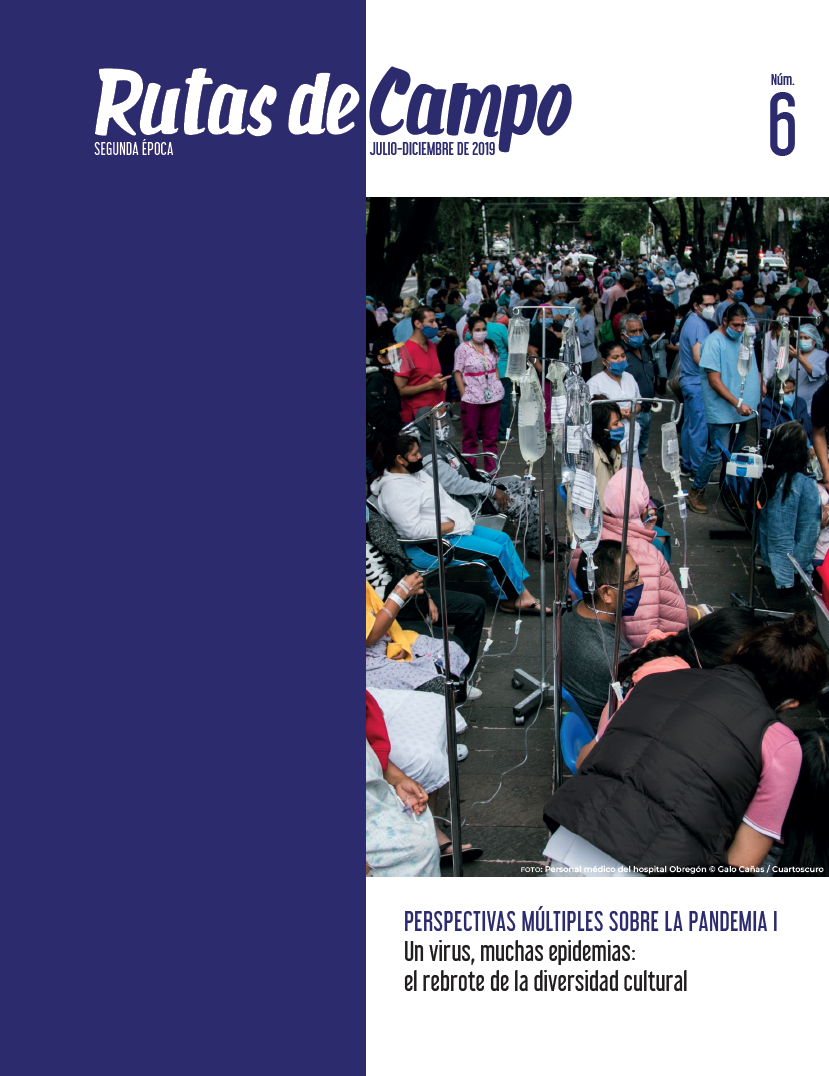“If I were a scientist...” Anthropological reflections on the public image of science in times of pandemic
Abstract
In this text we will focus specifically on scientific knowledge, on the trust that it has among specialists and adherents of its epistemic principles, and on its palpable hegemony around the planet as the only accepted path towards a cure for a virus perceived as invading our daily lives and territory. Specifically, this text aims to open the discussion regarding the public image of science (IPC), in the time of a pandemic characterized by revealing the crisis of the global political and economic system.
Downloads
References
Agamben, Giorgio (2020). “La invención de una pandemia”. En VV. AA. Sopa de Wuhan. Pensamiento Contemporáneo en tiempos de pandemias (pp. 17-20). ASPO.
Arnheim, Rudolf (1998). El pensamiento visual. Barcelona: Paidós.
Burns, T. W. et al. (2003). “Science Communication: A contemporary definition”. Public Understanding of Science, 12, pp. 183-202.
Chambers, David Wade (1983). “Stereotypic images of the scientist: The Draw-A-Scientist Test”. Science Education, 67(2), pp. 255-265.
Christidou, Vasilia et al. (2010). “The image of scientific researchers and their activity in Greek adolescents’ drawings”. Public Undestanding of Science, 21(5), pp. 626-647.
Code, Lorraine (2006). “Images of expertise. Women, science, and the politics of representation”. En Figuring it out. Science, gender, and visual culture (pp. 289-314). New Hampshire: Dartmouth College Press.
Cortassa, Carina (2012). La ciencia ante el público: dimensiones epistémicas y culturales de la comprensión pública de la ciencia. Argentina: Eudeba.
Espinosa, Adriana Elisa (2016). Evaluación de la creatividad en productos de divulgación de la ciencia: un modelo para los museos y centros de ciencia. México: UNAM.
Fahy, Declan y Bruce Lewenstein (2014). “Scientists in popular culture. The making of celebrities”. En Routledge Handbook of Public Communication of Science and Technology (pp. 83-96). Londres: Routledge.
Flicker, Eva (2003). “Between brains and breasts–women scientists in fiction film: on the marginalization and sexualization of scientific competence”. Public Understanding of Science, 12, pp. 307-318.
Franco, José (coord.) (2015). Los mexicanos vistos por sí mismos. Los grandes temas nacionales. Ciencia y tecnología: una mirada ciudadana. Encuesta Nacional de Ciencia y Tecnología. México: UNAM.
Galindo, María (2020). “Desobediencia, por tu culpa voy a sobrevivir”. En VV. AA. Sopa de Wuhan. Pensamiento contemporáneo en tiempos de pandemia (pp. 119-128). La Plata: ASPO.
Haynes, Roslynn (2003). “From Alchemy to Artificial Intelligence: Stereotypes of the Scientist in Western Literature”. Public Understanding of Science, 12, pp. 243-253.
Haynes, Roslynn (2016). “Whatever happened to the ‘mad, bad’ scientist? Overturning the stereotype”. Public Understanding of Science, 25(1), pp. 31-43.
_____ (2017). From Madman to Crime Fighter. The Scientist in Western Culture. Baltimore: John Hopkins University Press.
Joly, Martine (2003). La interpretación de la imagen: entre memoria, estereotipo y seducción. Barcelona: Paidós.
Latour, Bruno (1992). Ciencia en acción. Cómo seguir a los científicos e ingenieros a través de la sociedad. Barcelona: Editorial Labor.
Latour, Bruno y Steve Woolgar (1986). Laboratory Life. The construction of scientific facts. Nueva Jersey: Princeton University Press.
Locke, John (1999). Ensayo sobre el entendimiento humano. México: Fondo de Cultura Económica.
Malinowski, Bronislaw (1993). Magia, ciencia y religión. Barcelona: Planeta-Agostini.
Mead, Margaret y Rhoda Metraux (1957). “Image of the Scientists among High-School Students”. Science, 126(3270), pp. 384-390.
Olivé, León (2000). El bien, el mal y la razón. Facetas de la ciencia y de la tecnología. México: Paidós / UNAM.
Pujalte, Alejandro et al. (2014). “Las imágenes inadecuadas de la ciencia y de científico como foco de la naturaleza de la ciencia: estado del arte y cuestiones pendientes”. Ciencia y Educación, 20(3), pp. 535-548.
Rodríguez Salazar, Tania (2007). “Sobre el estudio cualitativo de la estructura de las representaciones sociales”. En Tania Rodríguez Salazar y María de Lourdes García Curiel (coords.), Representaciones sociales. Teoría e investigación (pp. 157-190). México: Universidad de Guadalajara.
Sjøberg, Svein (2020). Science and Scientists: The SAS-Study: Cross-Cultural Evidence and Perspectives on Pupils’ Interests, Experiences and Perceptions. Background, Development and Selected Results. Recuperado de: http://urn.nb.no/URN:NBN:no-14451
Svampa, Maristella (2020). “Reflexiones para un mundo post-coronavirus”. En VV. AA. La Fiebre. Pensamiento contemporáneo en tiempos de pandemias (pp. 17-38). La Plata: ASPO.
Wagoner, Brady (2008). “Making the Familiar Unfamiliar”. Culture & Psychology, 14(4), pp. 467-474.



